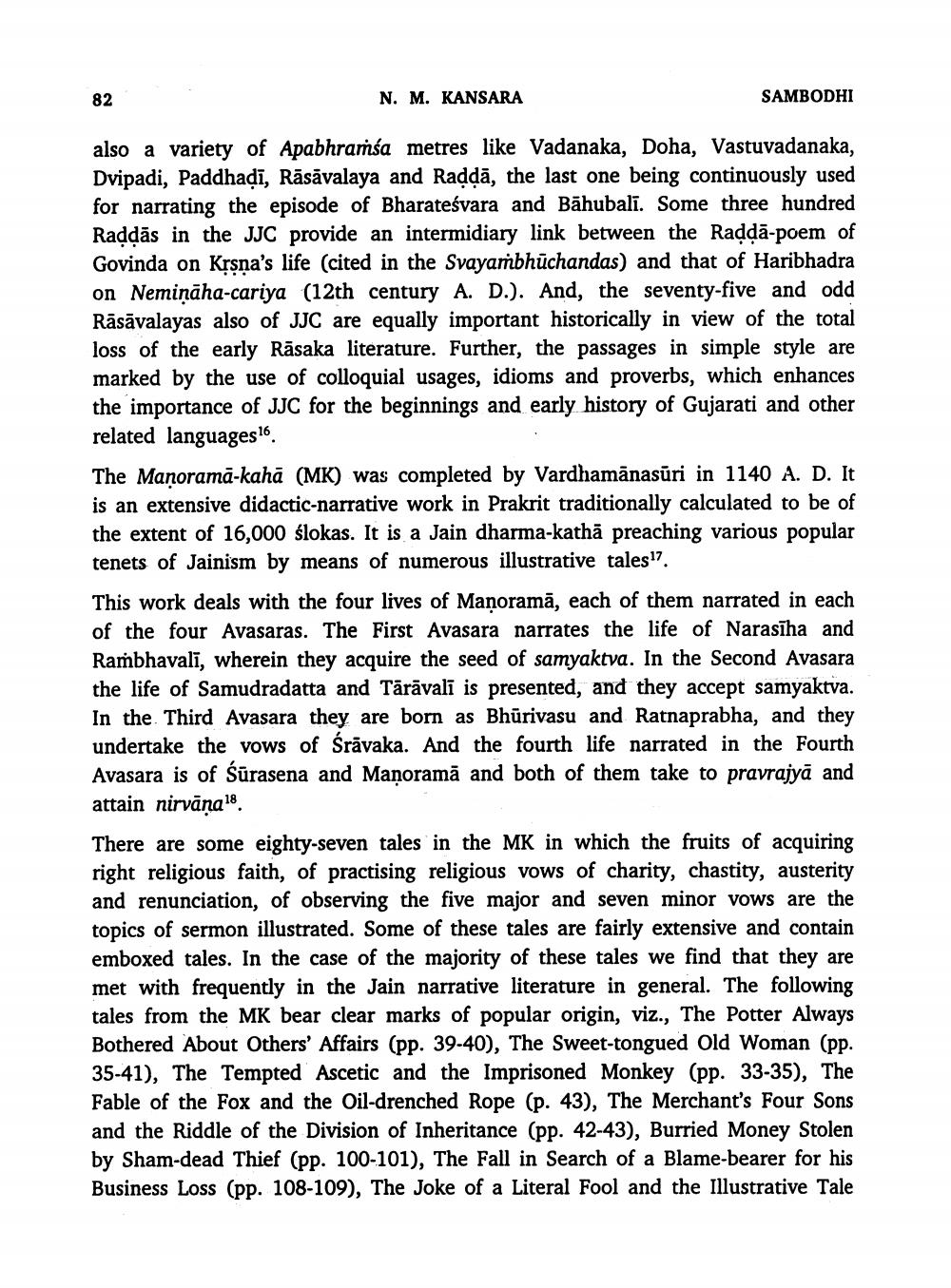________________
82
N. M. KANSARA
SAMBODHI
also a variety of Apabhramśa metres like Vadanaka, Doha, Vastuvadanaka, Dvipadi, Paddhadī, Rāsāvalaya and Raddā, the last one being continuously used for narrating the episode of Bharateśvara and Bāhubalī. Some three hun Raddās in the JJC provide an intermidiary link between the Raddā-poem of Govinda on Krsna's life (cited in the Svayambhūchandas) and that of Haribhadra on Nemiņāha-cariya (12th century A. D.). And, the seventy-five and odd Rāsāvalayas also of JJC are equally important historically in view of the total loss of the early Rāsaka literature. Further, the passages in simple style are marked by the use of colloquial usages, idioms and proverbs, which enhances the importance of JJC for the beginnings and early history of Gujarati and other related languages 16. The Manorama-kahā (MK) was completed by Vardhamānasūri in 1140 A. D. It is an extensive didactic-narrative work in Prakrit traditionally calculated to be of the extent of 16,000 ślokas. It is a Jain dharma-kathā preaching various popular tenets of Jainism by means of numerous illustrative tales? This work deals with the four lives of Manoramā, each of them narrated in each of the four Avasaras. The First Avasara narrates the life of Narasīha and Rambhavalī, wherein they acquire the seed of samyaktva. In the Second Avasara the life of Samudradatta and Tārāvalī is presented, and they accept samyaktva. In the Third Avasara they are born as Bhūrivasu and Ratnaprabha, and they undertake the vows of Śrāvaka. And the fourth life narrated in the Fourth Avasara is of Sūrasena and Manorama and both of them take to pravrajya and attain nirvana18
There are some eighty-seven tales in the MK in which the fruits of acquiring right religious faith, of practising religious vows of charity, chastity, austerity and renunciation, of observing the five major and seven minor vows are the topics of sermon illustrated. Some of these tales are fairly extensive and contain emboxed tales. In the case of the majority of these tales we find that they are met with frequently in the Jain narrative literature in general. The following tales from the MK bear clear marks of popular origin, viz., The Potter Always Bothered About Others' Affairs (pp. 39-40), The Sweet-tongued Old Woman (pp. 35-41), The Tempted Ascetic and the Imprisoned Monkey (pp. 33-35), The Fable of the Fox and the Oil-drenched Rope (p. 43), The Merchant's Four Sons and the Riddle of the Division of Inheritance (pp. 42-43), Burried Money Stolen by Sham-dead Thief (pp. 100-101), The Fall in Search of a Blame-bearer for his Business Loss (pp. 108-109), The Joke of a Literal Fool and the Illustrative Tale




